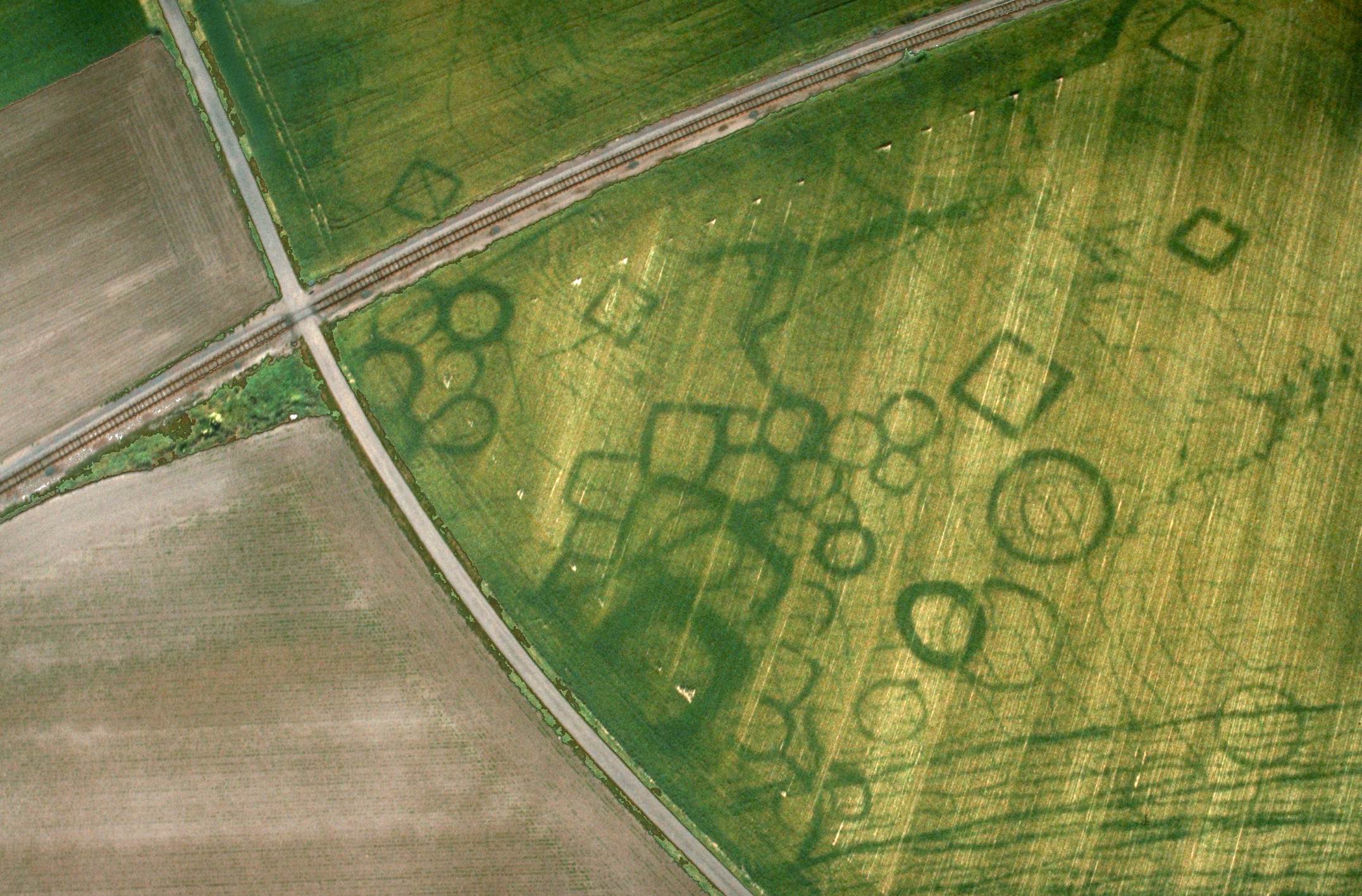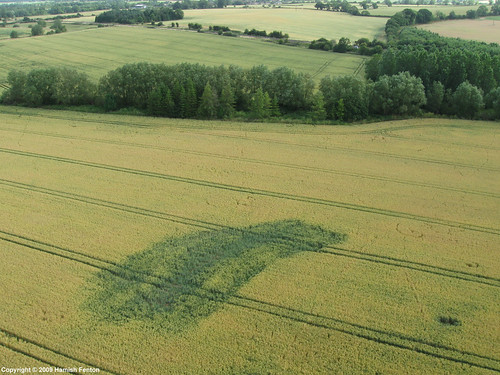Cropmark
Vegetation characteristic (English cropmark ) is a term used in archeology, which refers to the different growth and maturity of plants ( mostly cereals) over hidden in the ground archaeological findings. The vegetation is characteristic for the prospection of archaeological sites. This is understood as a non-destructive investigation of archaeological sites, which are already known or newly discovered by prospecting. This technique is mainly used in aerial archeology.
Emergence of the vegetation characteristic
Moisture differences
A vegetation feature is triggered by moisture differences which affect the critical periods of the growth cycle on the growth of the plant. First of all cereals, mainly barley here (as well as oats, wheat and rye), is very sensitive to changes in the subsoil. Other crops such as grass or potatoes, however, are very insensitive. For this reason above all crop marks in cornfields are known.
Essential for good development of the crop marks is the moisture present contrast. Generally very wet or water-impermeable soils (eg clay soils ) hardly form visible crop marks. However, in very dry or water-permeable soils (eg, sand and chalky soils), the effect can be dramatic.
Important for the visibility of hidden archaeological monument is the planting distance. Grain is very closely planted and thus has a high point density ( comparable to the image resolution of a scanner or the grain of a photograph ). Corn is applied in such large planting distance, that he was already eliminated for this reason, as an indicator of crop marks.
Dry summers turn out for the observation of growth characteristics as beneficial.
Positive growth characteristic
A positive feature of vegetation can be observed on the plate as ditches, post-holes, pits, etc.. These gradually infilled with organic material points lead to a better and more humid soil. The plant may develop a stronger root system. This has a higher growth and subsequent maturation with a longer, more powerful green color result.
Negative growth characteristic
A negative feature of fouling can occur on the hidden wall foundations or floors. Because of the underground obstacle, the roots do not reach the deeper moisture. The reduced thickness of the medium leads to the lighter dry out the plants. The development of the root system is severely impaired. It can be observed a lower stature and early maturity with yellowing. By Shadow negative crop marks are often traced even more striking.
Use of crop marks
Already in 1586 discovered the English antiquarian William Camden crop marks in a cornfield and interpreted them as archaeological sites. Crop marks thus count since the beginnings of archeology to the archaeological prospection, so for localization and documentation of archaeological sites - without excavation.
However, it can usually only gain a bird's-eye an overall impression, which allows an interpretation of the feature. For this reason, crop marks are today generally discovered, documented and observed by aerial photography. For a good documentation of vegetation Merkmales it is necessary to observe this both in different seasons, as well as over several years.
Other methods of botanical prospecting
Among the methods of botanical prospecting in addition to the crop marks include the mapping of vegetation. This method is used for locating abandoned settlements ( settlements dialed ) and makes advantage of the fact that feral medicinal, gardening and crops can persist for a long time and thus serve as indicators of former settlements.










